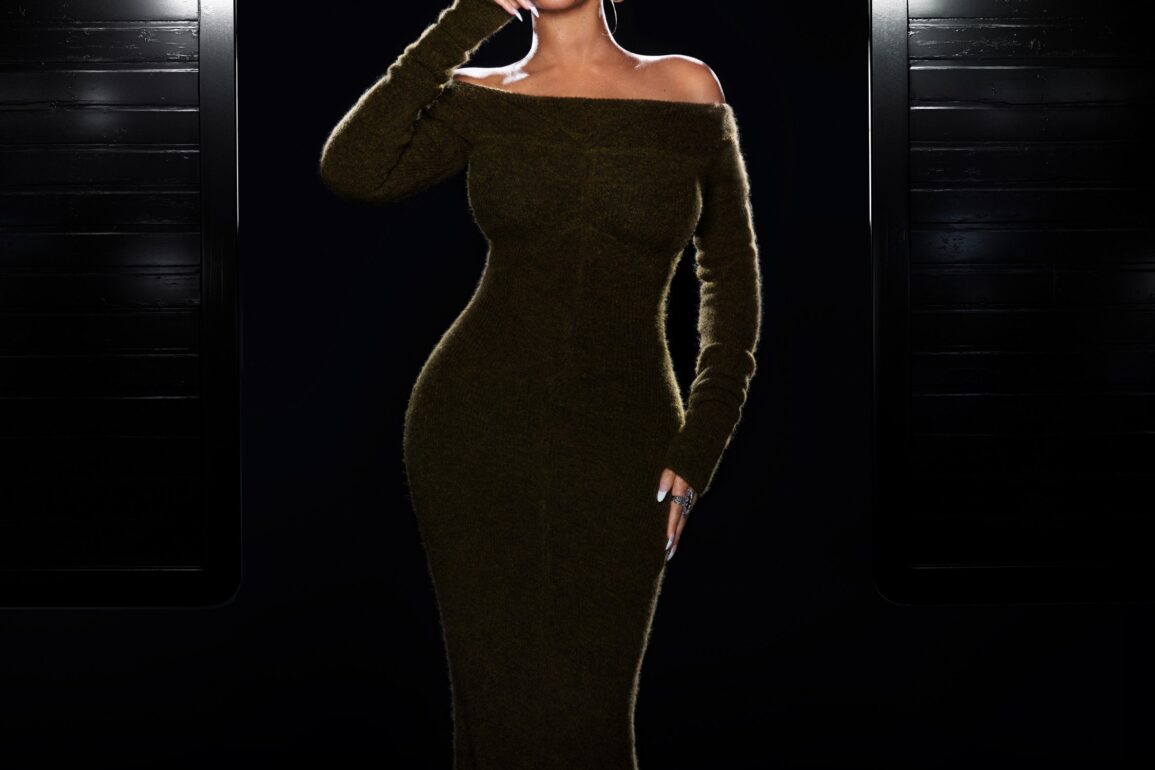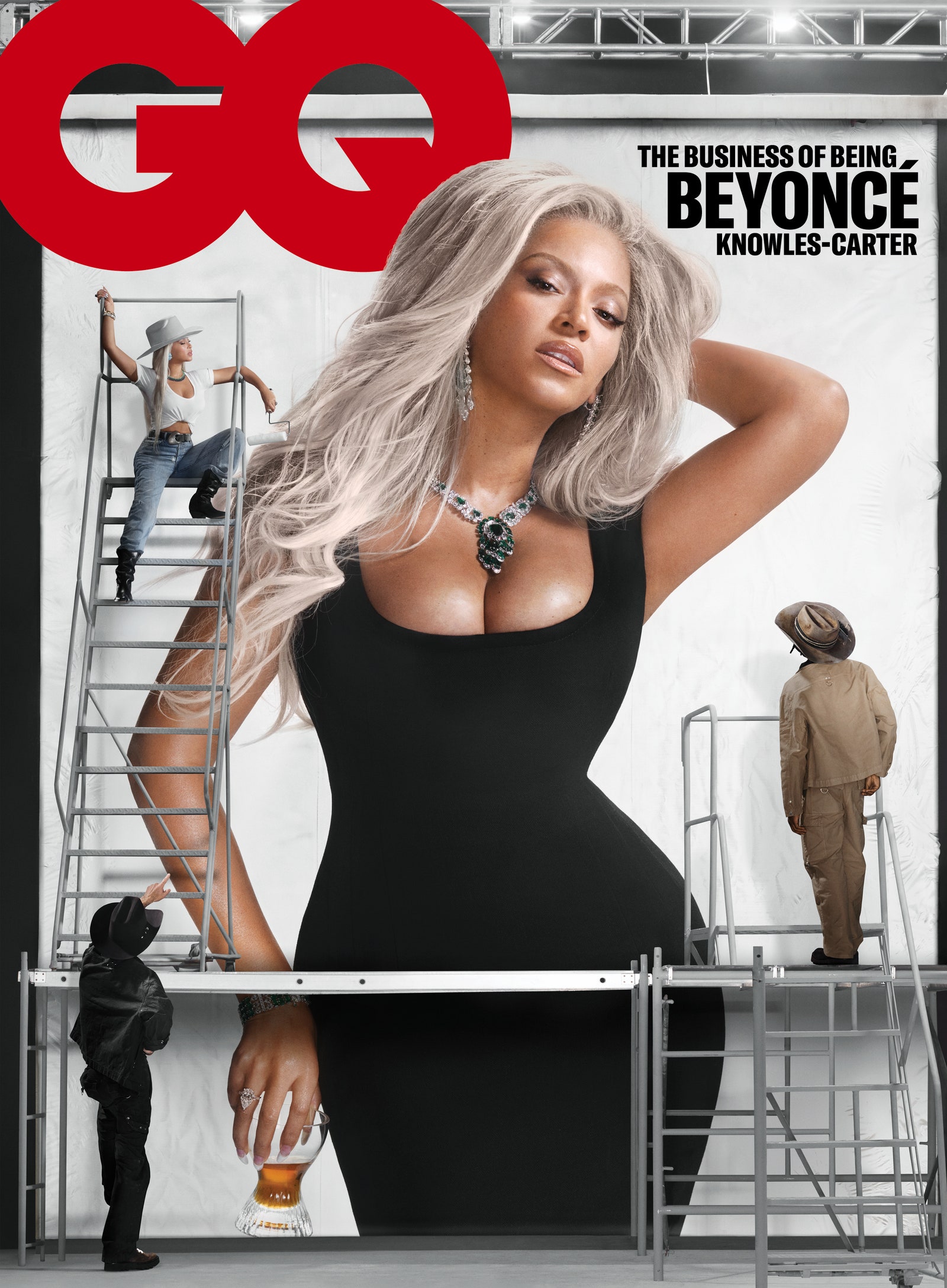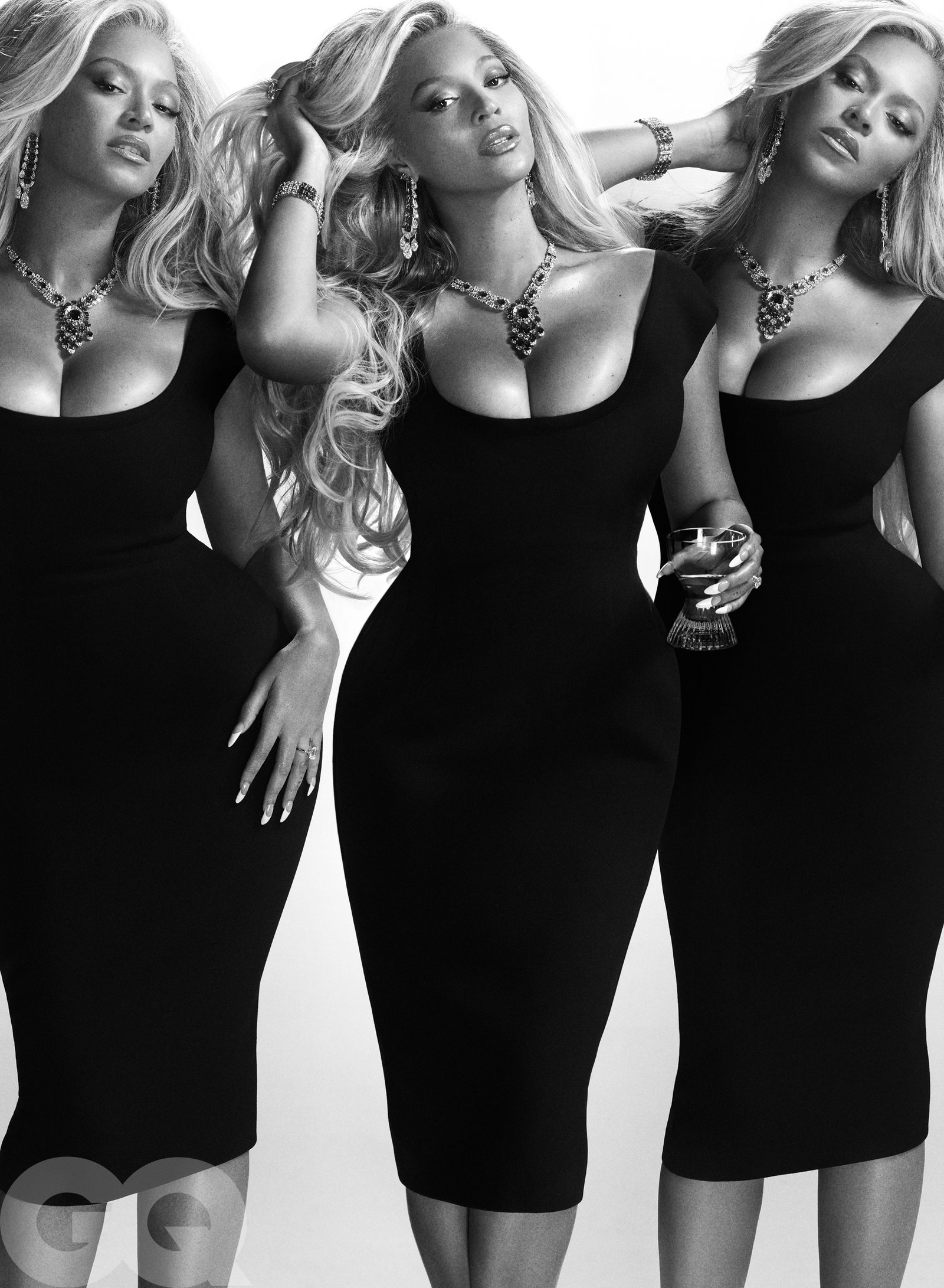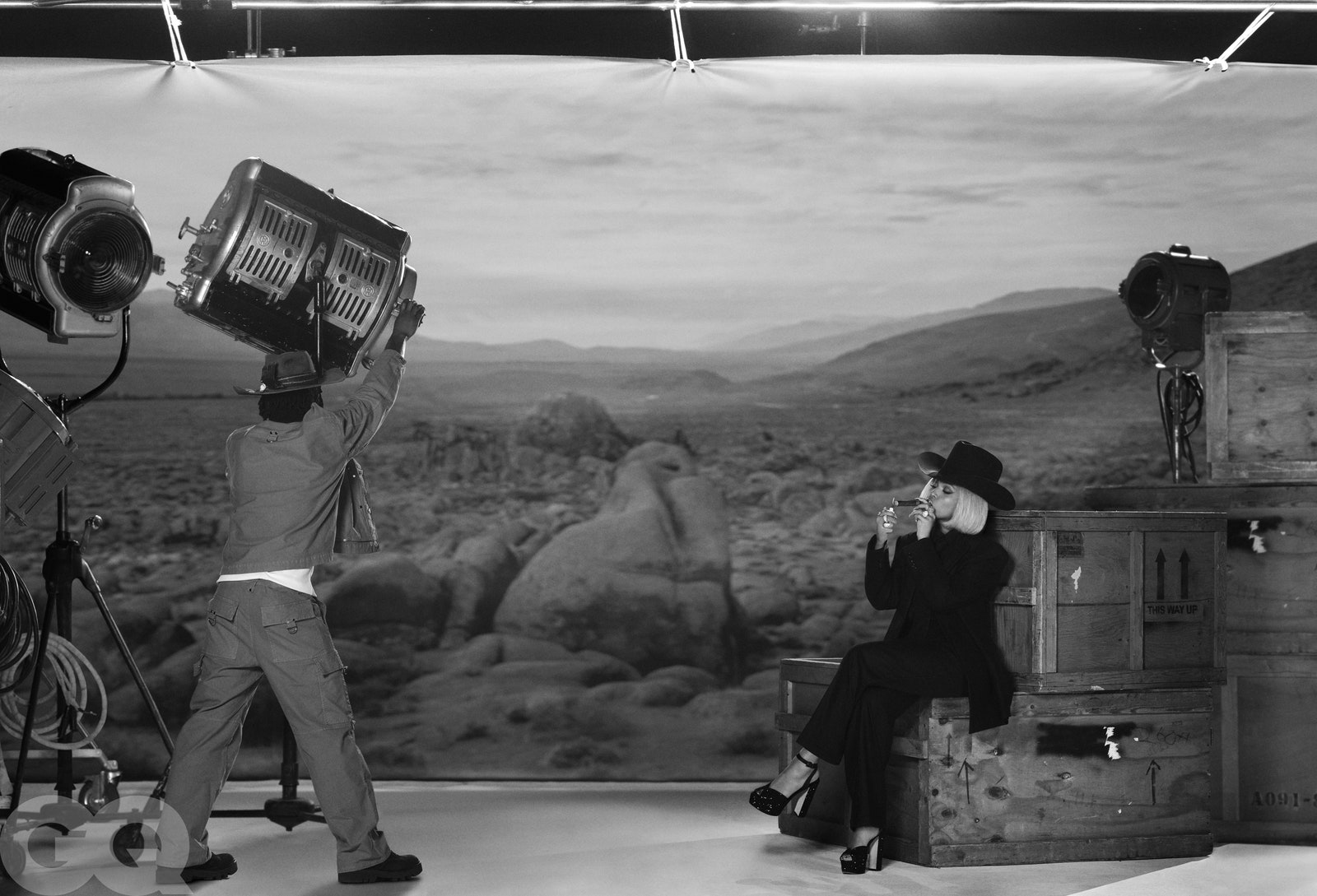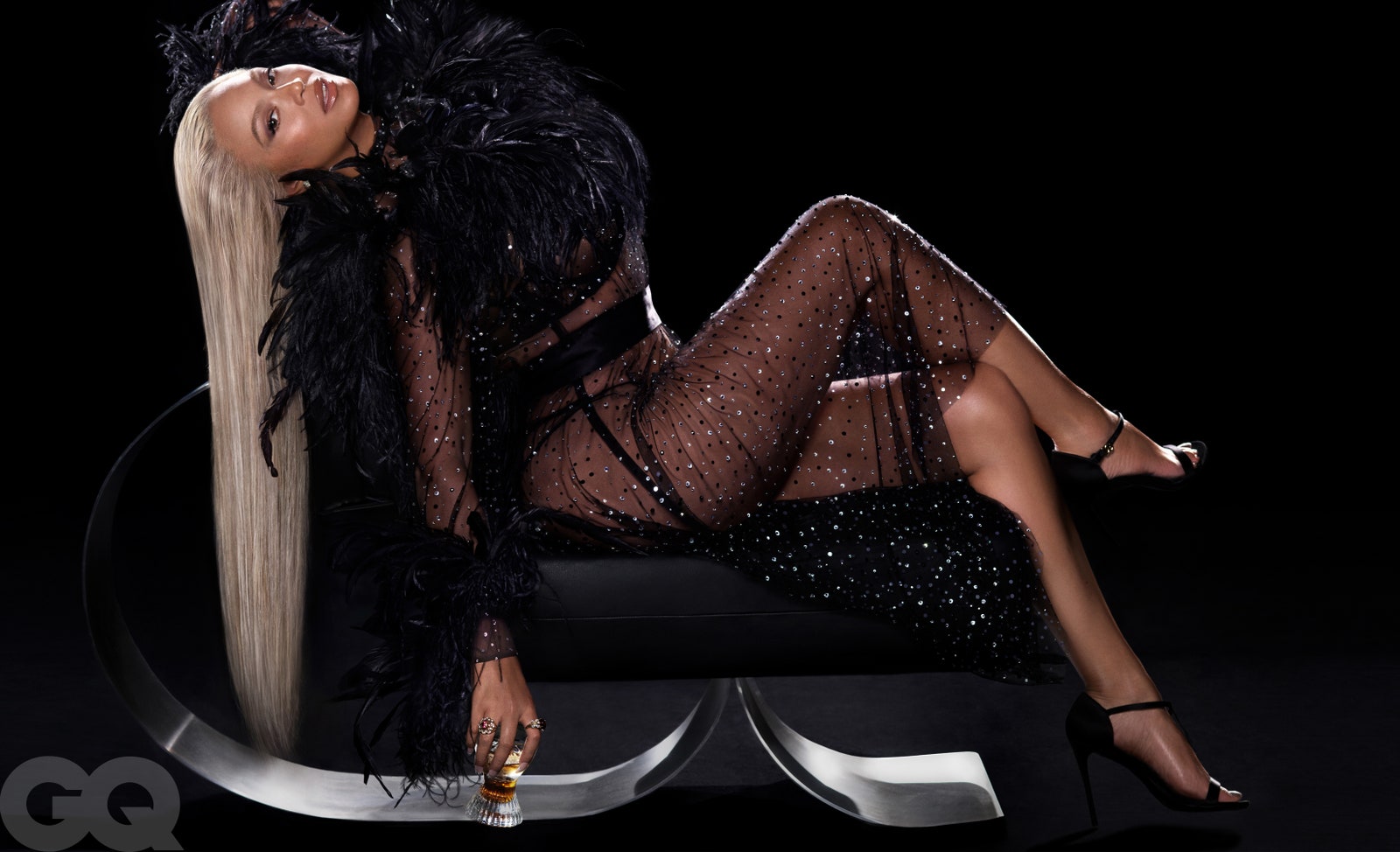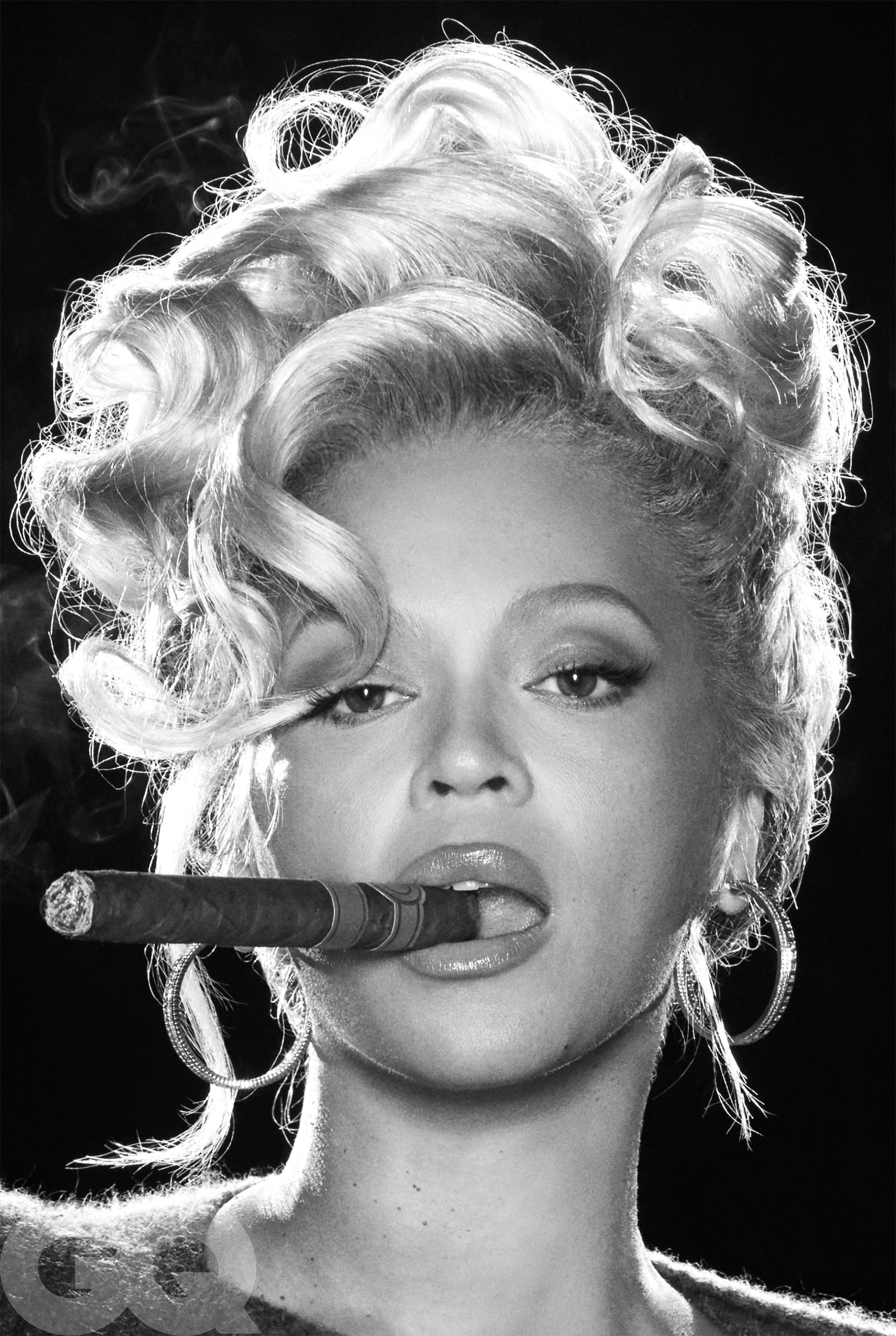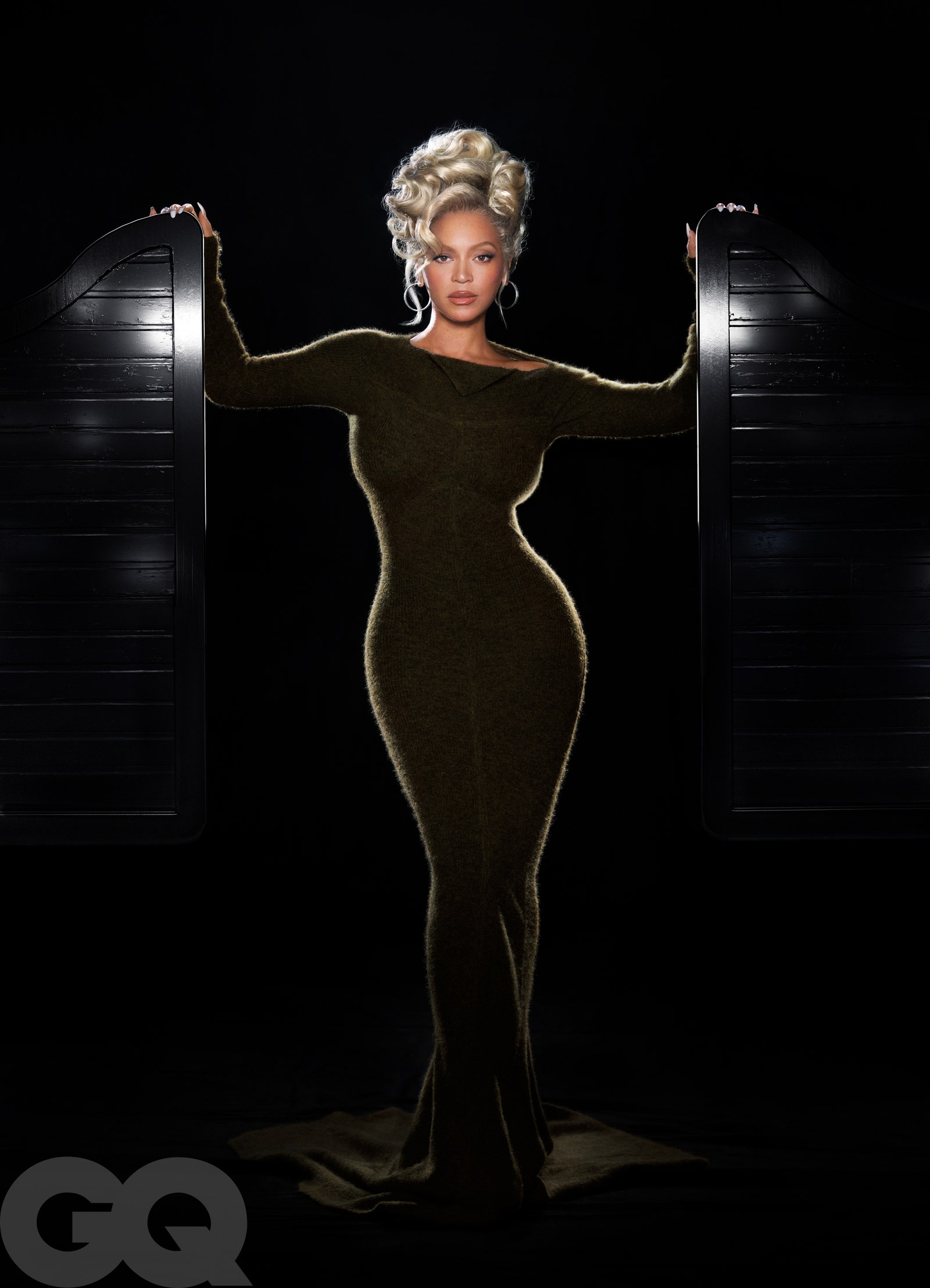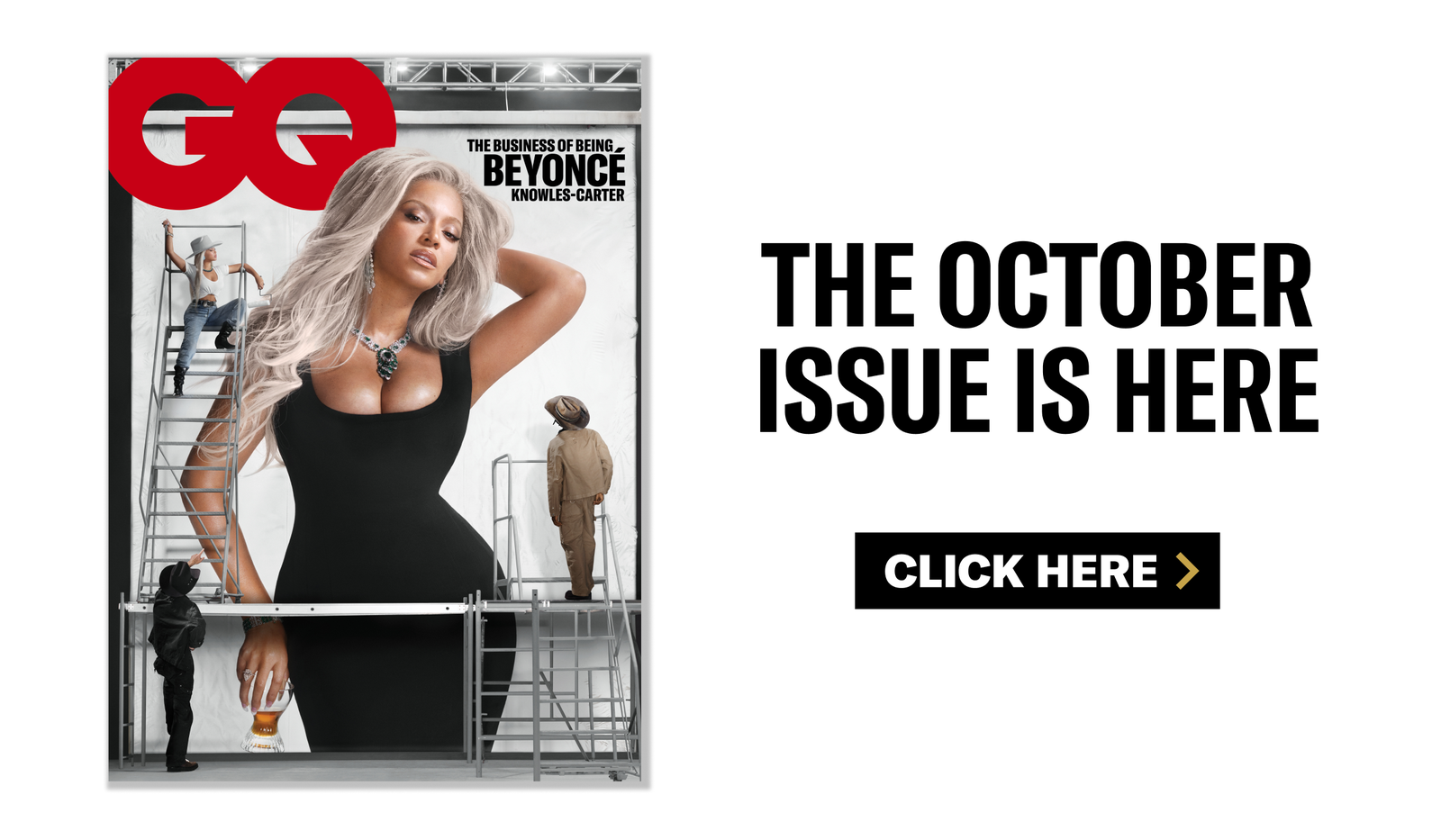Beyoncé is breaking out.
Midway through Cowboy Carter, her eighth and most recent studio album, released this past spring, a voice makes the project’s mission statement plain over blaring alarms and a thunderous beat—declaring the concept of genre to be a sense of confinement for those artists whose creativity is too wide-ranging to fit in a neat box. All before Beyoncé herself saunters in comparing herself to Thanos, the Marvel villain known for seeking precious stones of mystical power to claim as his own and assemble into one unified superpower.
There may not be an accompanying music video, but the lyrics conjure a potent visual: Beyoncé, armed with a bedazzled gauntlet, breaking down every stultifying wall, label, or box the industry ever tried to put her in across her 30-year career.
It’s a theme that applies to much of what Beyoncé has been up to for the past decade or so, especially in the last couple of years: a mission of reclamation, recentering Blackness in spaces where our influence has since been de-emphasized, whether in rodeo, on the great American plains, or on sweaty ballroom dance floors.
The project has been powered by legacy. Each step forward is illuminated with a look back, a tour through time tracing her own roots, while also yielding the knowledge that her family tree is just one in a larger forest where everything is connected. Whatever she does feels that much grander because of it. A new country-influenced album isn’t just an exercise in undoing the strictures of genre; it’s a history lesson, where forgotten pioneers can get their props and true lineages can be explored. (That voice denouncing genres belongs to Linda Martell, the Black country pioneer whose efforts endured some of the same resistance Beyoncé faced.)
And as such, her forays both inside and outside of music carry more weight than most celebrity brands can ever be expected to. For example, it felt equal parts momentous and inevitable when, in late July, Vice President Kamala Harris featured “Freedom” as the soundtrack to her first presidential campaign ad—and Beyoncé’s voice and lyrics seemed to announce a new political moment. Now, there’s SirDavis. Beyoncé Knowles-Carter is getting into the whiskey trade as a founder, in the most Beyoncé of fashions—challenging notions of masculinity and flipping them. Our biggest female entertainer presenting the manliest of all spirits, while honoring those in her lineage who came before. (SirDavis, created in partnership with Moët Hennessy, is named after her great-grandfather, Davis Hogue. And features the deliberate choice of branding it “whisky”—no e—like they do in Japan and Scotland, and in contrast to how it’s typically done in the US.) Like everything she does, it is ancestral, it is formidable, it has been concocted to perfection, and as a Black woman in a space perceived for old white men, it’s striking.
At 43, Beyoncé has shown, time and again, the ability to exert a rare kind of control—over her image, her likeness, her music and business worlds. She has become adept at breaking rules and entering new spaces, in business and in art, creating new norms and new opportunities for others as she goes. At this rate, there’s no frontier she can’t conquer, no stone any longer outside of her grasp. As the end of that Cowboy Carter verse goes, “I ain’t no regular singer, now come get everything you came for.” Still, there’s plenty left to wonder about: What keeps her going, three decades in, with nothing left to prove? Who is she, really, between the critically acclaimed albums, the blockbuster tours, and the dynamic docu-concert films? We got a rare glimpse in an extensive back-and-forth conducted via email this summer.
Beyoncé: Today, I’m on the East Coast, while I enjoy a little bit of summer sunshine.
Most days I try to wake up around 6 a.m., squeezing in an hour or two of work before the little ones are up. Parenting while working, I move forward, embracing the beauty and the chaos of it all.
Our home is alive with cousins and friends, spontaneous talent shows, and the clatter of dominoes. I’ve been trying to focus on my health, taking my supplements, and eating very clean. I’ve given up meat, except for turkey, this summer. I’m trying to muster the strength to work out, but I just can’t do it today. Maybe tomorrow. Haaaa!
I’ll never forget the first day I had whiskey. It spoke to me nice. I remember thinking, Why have I never had this before? It was strong and warm, just the right amount of challenge. I loved the process, the ritual of it. Whiskey isn’t something you just shoot down. It’s a commitment. You gotta have patience. I like that. Then I got into vintage Japanese whiskey and started doing tastings. It opened up a whole new world. I love everything about whiskey. The color, the smell, the way it dances in the glass.… And I love the stories that come with it. Every bottle has a history. I also like introducing whiskey to people who don’t know they love it yet. I think a lot more women would love it if they tasted it, and if they were really spoken to by the whiskey world.
Whiskey isn’t just for old men in smoky bars; it’s for anyone who appreciates depth, complexity, and a bit of mystery. The entire aging process is a labor of love, with attention put into every step, from the grains malting to the handcrafted barrels, and I appreciate all of it. Making whiskey is an art form. That’s what I love and respect about it. As the great Willie Nelson once said: Sometimes you don’t know what you love until somebody puts you on to some real good shit. So, to all the whiskey lovers out there, you’re welcome!
I wanted everyone to take a minute to research on the word cowboy. History is often told by the victors. And American history? It’s been rewritten endlessly. Up to a quarter of all cowboys were Black. These men faced a world that refused to see them as equal, yet they were the backbone of the cattle industry.
The cowboy is a symbol of strength and aspiration in America. The cowboy was named after slaves who handled the cows. The word cowboy comes from those who were called boys, never given the respect they deserved. No one would dare call a Black man handling cows “Mister” or “Sir.” For me, SirDavis is a sign of earned respect. We all deserve respect, especially when we give it.
Making liquor has been in Southern families like mine for many generations. The Jack Daniel’s famous recipe? That was heavily influenced by a Black man named Nathan “Nearest” Green. He was a former slave who became Jack Daniel’s master distiller. Now, there’s a delicious whiskey, Uncle Nearest Premium Whiskey, named after him, that is run by two women—Nearest Green’s great-great-granddaughter, Victoria Eady Butler, alongside Fawn Weaver. Victoria, in true legacy form to what Mr. Nearest started, is one of the first Black female master blenders in American whiskey.
Hopefully, this story, along with others like Victoria’s and Fawn’s, and now mine, will continue to open more doors.
There’s a huge contrast between the business journeys of men and women. Men often have the luxury of being perceived as the strategists, the brains behind their ventures. They’re given the space to focus on the product, the team, the business plan. Women, on the other hand, especially those in the limelight, are frequently pigeonholed into being the face of the brand or the marketing tool. It’s important to me to continue to take the same approach I have taken with my music and apply my learnings to my businesses.
I am here to change that old narrative. I’m here to focus on the quality. We took our time, and we did our research, and we have earned respect for our brand. I try to choose integrity over shortcuts. I’ve learned that true success isn’t about leaning on a name; it’s about crafting something genuine, something that can hold its own. It’s not about being perfect. It’s about being revolutionary.
I started Cowboy Carter almost five years ago. Pay close attention to my age in the lyrics of “16 Carriages.”
From the start of my career and on every album, I have always mixed genres. Whether it is R&B, Dance, Country, Rap, Zydeco, Blues, Opera, Gospel, they have all influenced me in some way. I have favorite artists from every genre you could think about. I believe genres are traps that box us in and separate us. I’ve experienced this for 25 years in the music industry. Black artists, and other artists of color, have been creating and mastering multiple genres, since forever.
This is why it was so important for me to sample the composer Joseph Bologne, known as Chevalier de Saint-Georges, in the song “Daughter” on Cowboy Carter. Violin Concerto in D Major, Opus 3, No. 1: II. Adagio was created in the 1700s. This is a testament to Chevalier’s vision. I hope it inspires artists, as well as fans, to dig deeper and learn more about the Black musical innovators who came before us. Some of the most talented artists never achieve the mainstream praise they deserve, especially when they defy the norm.
I was so hyped to see a song like “Texas Hold ’Em” gain worldwide acceptance. Even more exciting was how it helped reinvigorate the Country genre across music, fashion, art, and culture, and introduced the world to so much great talent like Shaboozey, Tanner Adell, Willie Jones, Brittney Spencer, Tiera Kennedy, and Reyna Roberts.
I am a musician first. It has always been my priority. I didn’t get into anything that could take away from my artistry until I felt I was solidified as a master at my first love, music.
When I started my hair care brand, Cécred, I wanted it to be recognized for what it does for real people and their hair. When it launched, I made a conscious decision not to appear in the ads. The brand’s first impression needed to stand on its own merit, not be swayed by my influence. I’ve been using these products for years, so I know firsthand how magical they are.
We live in a world of access. We have access to so much information—some facts, and some complete bullshit disguised as truth. Our children can FaceTime and see their friends at any given moment. My husband and I? We used calling cards and Skype when we were falling in love. I couldn’t afford the international hotel bills, so I literally would get international calling cards to call him. Just recently, I heard an AI song that sounded so much like me it scared me. It’s impossible to truly know what’s real and what’s not.
One thing I’ve worked extremely hard on is making sure my kids can have as much normalcy and privacy as possible, ensuring my personal life isn’t turned into a brand. It’s very easy for celebrities to turn our lives into performance art. I have made an extreme effort to stay true to my boundaries and protect myself and my family. No amount of money is worth my peace.
I create at my own pace, on things that I hope will touch other people. I hope my work encourages people to look within themselves and come to terms with their own creativity, strength, and resilience. I focus on storytelling, growth, and quality. I’m not focused on perfectionism. I focus on evolution, innovation, and shifting perception. Working on the music for Cowboy Carter and launching this exciting new project feel nothing like prison, nor a burden. In fact, I only work on what liberates me. It is fame that can at times feel like prison. So, when you don’t see me on red carpets, and when I disappear until I have art to share, that’s why.
I build my work schedule around my family. I try to only tour when my kids are out of school. I always dreamt of a life where I could see the world with my family and expose them to different languages, architecture, and lifestyles.
Raising three kids isn’t easy. The older they get, the more they become their own individuals with unique needs, hobbies, and social lives. My twins are God-sent. Parenting constantly teaches you about yourself. It takes a lot of prayer and patience. I love it. It’s grounding and fulfilling.
My kids come with me everywhere I go. They come to my office after school, and they are in the studio with me. They are in dance rehearsals. It’s natural that they would learn my choreography.
Blue is an artist. She has great taste in music and fashion. She is a fantastic editor, painter, and actress. She has been creating characters since she was three. She’s a natural, but I did not want Blue onstage. Blue wanted it for herself. She took it seriously and she earned it. And most importantly, she had fun! We all watched her grow more and more every night before our eyes.
I get excited about love, legacy, and longevity. Do I love what I am trying to create for the love of it? I am discovering that legacy is the common denominator in all the businesses that I have done.
I’m drawn to authenticity. I don’t waste my time on something unless I’m deeply passionate about it. If I don’t wake up thinking about it and I’m not going to sleep dreaming about it, it’s not for me. My perception of what success looks like, for me, is very different than most. When I commit, I’m 100 percent in. I prefer to focus quietly, uninterrupted by things that are a distraction to the authenticity. I believe everything can always be better. My job is to give until it is the best it can possibly be.
I’m inspired by things that fill a void, solve a problem, or don’t already exist. Otherwise, I’m not drawn to the opportunity.
I try to challenge myself and the people around me to think differently. I think a big part of success is your outlook on life. Every disappointment is an opportunity for growth. An opportunity to pivot. I trust God, even when it feels like I can barely see the light at the end of the tunnel. I know the earth is going to open up for me.
What is ironic and fateful is that I knew I wanted to create a whiskey brand before I knew the story of my great-grandfather. Discovering my history has been deeply inspiring and motivating. Our whiskey’s legacy dates back over 200 years to a Black man in Alabama in the 1800s…a man who was a businessman and an entrepreneur, but would have never had the opportunity to create a mainstream whiskey back then. Systemic barriers would not have allowed it. But it turns out that my great-grandfather’s hands planted the seed that laid the groundwork, and we honor him in the most profound way. This is more than just a business; it’s a fulfillment of a legacy.
I’m a firm believer that the past, present, and future are very connected. Our history is a portal to our future. I feel connected to my ancestors and believe they are guiding me and my family. I try to keep my heart opened to their guidance. I’m an extension of my Uncle Johnny, my great-grandfather, my grandmother Agnéz Deréon. I love the things they loved, before I knew they loved them.
Before anyone knew my association with SirDavis, I wanted the brand to gain its critical acclaim based on its taste and craftsmanship. I was adamant that we put our product in front of the toughest critics and earn their respect for the strength of the whiskey itself. After finalizing our recipe, we began submitting the whiskey into competitions to critics for tastings across the globe. There was no trace of “Beyoncé” on the bottles or in any of the branding. It was very intentional.
It took years of hard work to feel confident enough to do that. Years of testing, testing and perfecting, what eventually became the final SirDavis recipe.
My dreams, my passions, my skills, my fears, my traumas, my patterns, are all connected to my ancestors. They are part of me and I them. And I am honored to share the legacy of my family.
I am proud of what I have been able to do, but I also recognize the sacrifices—mine and my family’s. There was a time when I was pushing myself to meet unrealistic deadlines, while not taking the time to enjoy the benefits of why I was working so hard. There aren’t many of us from the late ’90s who were taught to focus on mental health. Back then, I had little boundaries, and said yes to everything. But I’ve paid my dues a hundred times over. I have worked harder than anyone I know. And now I work smarter. In the end, the biggest reward is personal joy. Has what I created pushed others to think freely and believe in the impossible? If the answer to that question is yes, then that is the gift.
I wouldn’t say that I was anti-pop. I respected pop. But it was a time where everyone was doing pop/dance music, and R&B and soul were getting lost. It was popular and fun, but it wasn’t my thing. It was not where I was going with my music career at that time. I was yearning for something deeper with more musicality. That’s when I put out “1+1” and “Love On Top.”
I thought it was important that during a time where all we see is visuals, that the world can focus on the voice. The music is so rich in history and instrumentation. It takes months to digest, research, and understand. The music needed space to breathe on its own. Sometimes a visual can be a distraction from the quality of the voice and the music. The years of hard work and detail put into an album that takes over four years! The music is enough. The fans from all over the world became the visual. We all got the visual on tour. We then got more visuals from my film.
I have been putting my body through extremes for multiple decades. I’ve always strived to perform at the level of my favorite athletes on my tours, except in embroidered crystals and high heels, haaaa!
My knee injury was an opportunity to transition into a new animal. I retired from the formula of the pop star a very long time ago. I stopped focusing on what’s popular, and began focusing on the qualities that get better with time and experience. Good music and strong messages will never retire.
I love and respect all of the female singers-songwriters who are out right now.… Raye, Victoria Monét, Sasha Keable, Chloe x Halle, and Reneé Rapp. I love Doechii and GloRilla, and I just heard That Mexican OT, he’s from Houston…. He goes hard! I really like “Please Please Please” by Sabrina Carpenter, and I think that Thee Sacred Souls and Chappell Roan are talented and interesting. I’m obsessed with my backseat baby…. I’m a Smiler.
But the truth is, I spend most of my time listening to the classics, like Stevie Wonder, Marvin Gaye, and music from artists on the Stax label. I just watched that documentary. It’s so good! I highly recommend it. The best movie I’ve seen this year is Inside Out 2. I think it’s brilliant, and I’m currently watching House of the Dragon and The Chi.
Singing is not work for me. I sing for me. I love music and I love to sing. It’s a passion that runs deep. There’s magic in the way it feels on my throat, a resonance that vibrates through me. When I am at my lowest, when I’ve been sad or in a heavy fog, sick or anxious with sleepless nights, I sing. And, often, I sing alone.
My voice has always been my companion. It’s why I have always been able to be happy alone. Music understands my heart even when I can’t find words. But always, it’s in those private sanctuaries—the studio, the car—where I find my peace.
Singing soothes me, it steadies my heartbeat, it’s my best hit of dopamine. There’s a certain magic in sitting at the piano, and letting my fingers play random chords as I just let any and everything come out. Singing has healed me time and time again. It’s been my refuge.
It’s one of the deepest joys of my life, a necessity as vital as breath. Without singing, without music, without creating, I would be a walking dead. Creating music isn’t work for me; it’s what I was born to do. I also have my Cécred Sundays where I practice my self-care. I take baths with essential oils. I do acupuncture, cupping, reflexology, and I play my sound bowls with my kids. I make honey, paint, decorate, swim, and design clothes and stages. I have written children’s books for my children and design animation. Anything creative makes me happy. I also edit for fun. I genuinely enjoy it.
A version of this story originally appeared in the October 2024 issue of GQ with the title “It’s Not About Being Perfect. It’s About Being Revolutionary.”
PRODUCTION CREDITS:
Photographs by Bryce Anderson
Styled by Katie Grand
Hair by Kim Kimble for The Only Agency using Cécred
Skin by Rokael Lizama at Opus Beauty using Rokael Beauty
Manicure by Miho Okawara
Tailoring by Timothy White
Set design by Ibby Njoya at New School Represents
Produced by Alicia Zumback at Camp Productions
Special thanks to Shiona Turini, personal stylist to Beyoncé
This post was originally published on this site be sure to check out more of their content




